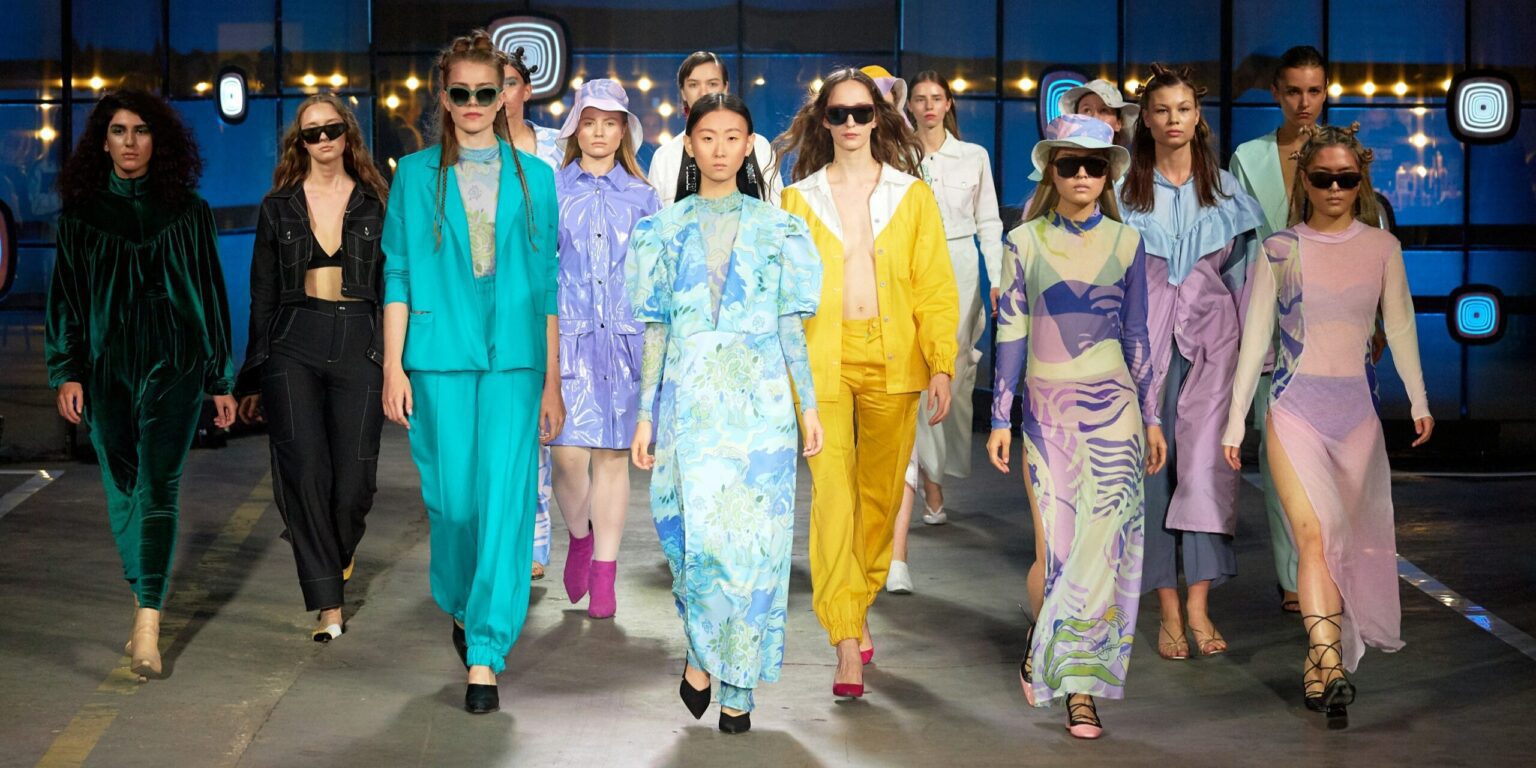Paris Fashion Week, held in early July 2025, marked a significant shift in the fashion industry, emphasizing sustainability and environmental responsibility. Designers showcased collections that prioritized eco-friendly materials, ethical production methods, and timeless designs aimed at reducing environmental impact.
One of the most talked-about moments was Dutch designer Iris Van Herpen’s unveiling of a “living dress” made from 125 million bioluminescent algae. The gown, part of her “Sympoiesis” collection, glowed in electric blue, highlighting the fusion of fashion and biology. Van Herpen’s commitment to eco-conscious couture was evident in her use of lab-grown bio-protein materials, emphasizing the potential of sustainable science in high fashion.
Stella McCartney continued to lead in sustainable fashion, presenting a collection made entirely from recycled fabrics, including grape leather and regenerated nylon. Her designs demonstrated that luxury and environmental responsibility could coexist, setting a benchmark for other brands.
Chloé focused on creating timeless pieces designed for longevity, using organic cotton and recycled materials. The brand’s approach resonated with consumers seeking durable and ethically produced clothing.
The presence of high-profile celebrities underscored the industry’s commitment to sustainability. Kim Kardashian made a striking return to the runway at Balenciaga’s Fall 2025 couture show, wearing a figure-hugging ivory lace-trimmed midi dress inspired by Elizabeth Taylor’s iconic outfit from the 1958 film “Cat on a Hot Tin Roof.” She complemented the look with a matching fur coat and over 250 carats of Lorraine Schwartz diamonds, including earrings once owned by Taylor. Kardashian’s appearance highlighted the blend of classic glamour with modern sustainable practices.
Cardi B made bold fashion statements throughout the week, attending multiple shows in avant-garde outfits. At the Schiaparelli Haute Couture show, she wore a dramatic black column gown featuring ivory beaded fringe and accessorized with a live black bird, an homage to her upcoming album “Am I the Drama?”. Her daring ensembles emphasized the fusion of theatricality and sustainability in modern fashion.
Other notable attendees included Naomi Campbell and Penélope Cruz, who embraced Chanel’s classic style in tweed and glittering two-piece ensembles, reflecting the brand’s commitment to sustainable luxury.
Emerging designers also played a pivotal role in promoting sustainability. Marine Serre, known for her innovative approach to luxury fashion, showcased designs incorporating recycled materials, addressing global issues, and challenging traditional notions of luxury. Her work exemplified the blend of art, functionality, and environmental consciousness.
Karoline Vitto, a Brazilian-born designer, redefined high fashion by celebrating body diversity and curves. Her collections featured sophisticated jersey dresses and sculptural hardware, emphasizing adjustability and inclusivity. Vitto’s use of sustainable materials like seaweed-based fibers and collaborations with Brazilian and European textile mills highlighted her commitment to eco-friendly practices.
The emphasis on sustainability at Paris Fashion Week reflects a broader industry trend. Designers are increasingly adopting eco-friendly materials, transparent supply chains, and strategies to reduce waste. The global sustainable fashion market is projected to surpass $11.1 billion by 2027, indicating a growing consumer demand for ethically produced clothing.
While challenges remain, such as scaling up sustainable production and addressing the environmental impact of fashion shows, the industry’s commitment to change is evident. Paris Fashion Week 2025 showcased that fashion could be both beautiful and conscientious, setting the tone for a more sustainable future.
